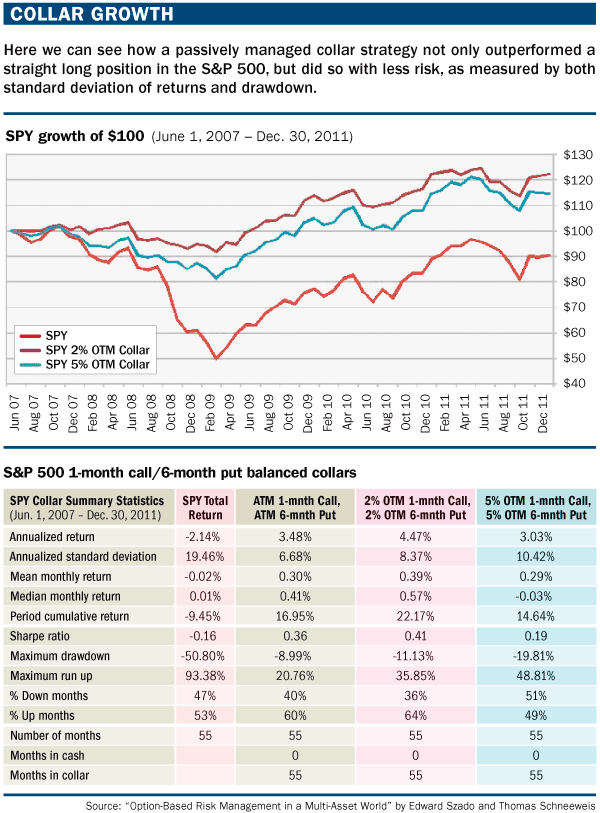![]() Courtesy of Phil Gocke, Options Industry Council
Courtesy of Phil Gocke, Options Industry Council
Since the 2008-09 financial crisis and the central bank’s response of near zero interest rates, financial markets have been vacillating violently between risk-on and risk-off periods. This bipolar attitude toward risk has increased asset class correlations, negating the effective benefit of many traditional equity diversifiers. In this unpredictable climate, investors are focused on seeking strategies that offer downside protection but also upside participation.
One solution to achieving both of these often mutually exclusive desires is an option-based equity collar. A long collar strategy involves owning the underlying, while being long a put option with a strike price below the market and short a call option with a strike price above the market. This orientation of the strike prices makes each put and call option out-of-the-money (OTM). An option collar can provide portfolios with greater downside risk protection than standard multi-asset diversification programs, but they also allow for profits during risk-on rallies.
Recent research has examined the performance of the collar strategy against a range of exchange-traded funds (ETFs) across multiple asset classes, including equity, currency, commodity, fixed income and real estate. The resulting book, “Option-Based Risk Management in a Multi-Asset World,” was authored by Research Analyst Edward Szado and University of Massachusetts Isenberg School of Management Professor of Finance Thomas Schneeweis. Their analysis shows that for most of the asset classes considered, an option-based collar strategy, using six-month put purchases and consecutive one-month call writes, provides a holy grail of investing of improved risk-adjusted performance and significant risk reduction.
“Collar growth” (below) illustrates the benefit of an equity collar strategy on the popular SPDR S&P 500 (SPY) ETF. Over the 55-month study period ending Dec. 30, 2011, the 2% OTM passive SPY collar returned more than 22% (4.5% annually), while the long SPY experienced a loss of more than 9% (–2.1% annually). The collar earns its superior returns with less than half the risk as measured by the standard deviation (8.4% for the collar vs. 19.5% for SPY).
One of the most telling statistics supporting the potential benefit of equity collar protection is the maximum drawdown. During the study period, SPY experienced a maximum loss of 50.8% while the 2% OTM collar reduced this negative performance by four-fifths to a maximum loss of 11.1%.
ENTIRETY OF ARTICLE CAN BE FOUND AT FUTURESMAG.COM

